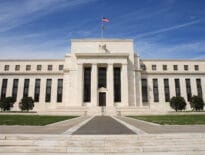Most of Massachusetts appears fairly well-insulated from home price declines should a market downturn take hold, a new analysis says.
Based on gaps in home affordability, underwater mortgages, foreclosures and unemployment, ATTOM, a real estate data provider, listed much of the Greater Boston area at the low end of a ranking of America’s counties by risk, with the Pioneer Valley and South Coast earning somewhat riskier marks.
Middlesex and Suffolk counties scored best, taking 557th and 538th place among the 581 counties ranked, followed by Norfolk (420th) and Essex (370th). Of Greater Boston’s five counties, only Plymouth scored anywhere near the top of the risk table, at 190th place.
Western Massachusetts’ counties showed a spread of risk: Hampden County sat at 126th place, the riskiest county in the state. But Berkshire County took 218th place and Hampshire County landed at 362nd.
Worcester County sat at 269th in ATTOM’s analysis, while Barnstable rang in at 213th and Bristol at 179th.
The analysis considered counties with a population of at least 100,000 and at least 50 single-family home and condo sales in the fourth quarter of 2022. The report did not analyze Franklin, Dukes or Nantucket counties.
The 50 most at-risk areas included seven counties in the Chicago metropolitan area, five in and around New York City, three in or near Cleveland, OH, and 13 spread through northern, central, and southern California. The rest were clustered mainly in other parts of the East Coast, including two of the three counties in Delaware.
While nothing in the data suggests a looming market crash anywhere in the country, the composite rankings of the four market measures analyzed are as much as four times higher for the 50 most at-risk versus the 50 least at-risk, Rob Barber, chief executive officer at ATTOM, said in an email to Banker & Tradesman.
“That means a greater potential for prices dropping further, which helps buyers, but damages home-seller profits, homeowner equity and household wealth. All those things have ripple effects across the economy because they affect how much households have for a myriad of things, including the purchase of a larger home or a second home, starting or expanding a business, investing in securities markets, paying college tuition or dealing with major medical expenses,” he said. “The risk gaps make the markets on the top-50 list worth an extra close watch heading into the Spring home-buying season. That is especially important this year as the U.S. housing market comes off a downturn in the second half of 2022 after 11 years of almost unrelenting price, profit and equity gains.”







